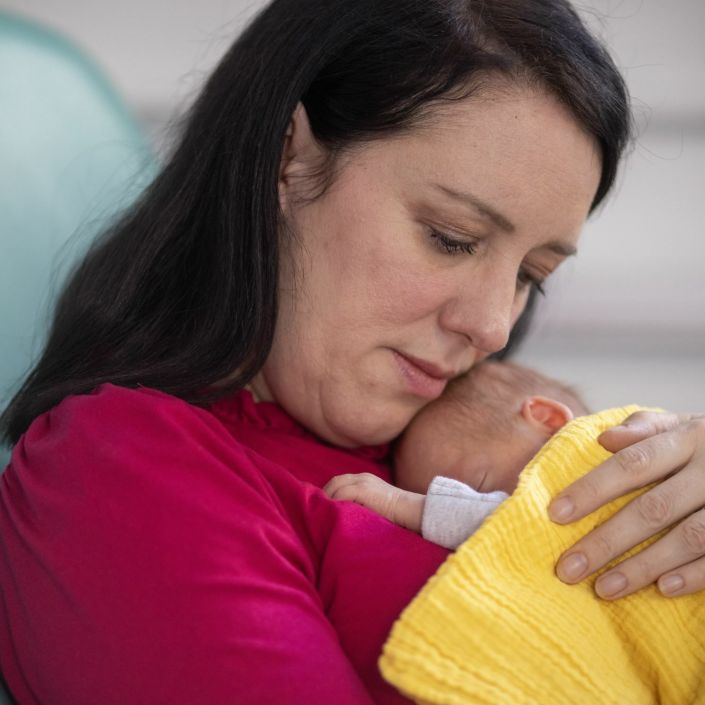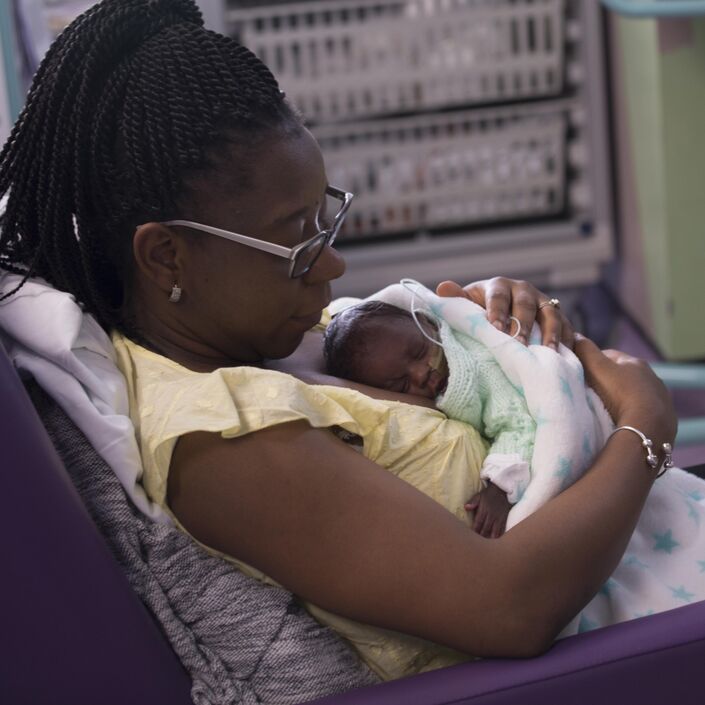Sepsis is a life-threatening reaction to an infection. It happens when the body’s normal immune system reacts to an infection and starts to damage the body’s tissues and organs.
What is sepsis?
What causes sepsis in babies?
Babies born premature are more likely to get infections that can lead to sepsis. This is because they have a weaker immune system, and their skin and gut is more fragile than in babies born at term. Babies born premature are also more likely to develop infections that lead to late-onset sepsis (sepsis that happens over 72 hours after birth).
Infection can happen through equipment such as tubes into a vein (intravenous, or IV lines) or ventilation tubes, which help support your baby’s breathing.
Babies born at term can also develop sepsis. In some cases, problems in pregnancy or labour can increase the risk of infection in the baby. An example of this can include pre-labour rupture of membranes (PROM), which is when the mother’s waters break after 37+0 weeks of pregnancy and labour has not started.
The most common cause of early-onset sepsis (sepsis that happens in the first 72 hours after birth) is an infection caused by bacteria known as group B streptococcus (GBS). If this, or other bacteria is present in the mother’s birth canal it can pass to the baby during birth. This can sometimes cause an infection which can lead to sepsis.
What are the signs of sepsis in babies?
Signs of sepsis can be non-specific and difficult to spot in babies. This is because the signs of sepsis can also happen for other reasons. Some signs include, but are not limited to, the following:
- A high or very low temperature.
- Breathing difficulties.
- Changes in skin colour. For example, this could include jaundice (yellowing of skin and whites of eyes) or going blue.
- Changes in behaviour. For example, they could be more irritable or not feeding as usual.
If your baby is on the neonatal unit, the healthcare team looking after your baby will look for these signs.
Babies are also treated for sepsis if there are risk factors at birth that suggest that they are at risk of infection. These risk factors may include signs of sepsis in the mother or if the mother has pre-labour rupture of membranes (see above). This is usually done as a precaution.
If you are at home, the NHS website has guidance on what to do if you are concerned your baby or child may be showing some of the signs of sepsis.
How are infections and sepsis treated?
If doctors suspect that your baby has an infection and is developing sepsis, they will admit your baby to the neonatal unit (if they have not already been admitted). They may use several tests to confirm diagnosis, including the following:
- Blood tests - to see if there has been an increase in white blood cells (if low white cell count is low), or if there is inflammation or infection present.
- Blood cultures - which checks for any bacteria in the blood.
- Urine tests.
- X-rays.
- Lumbar puncture - which tests the liquid around the brain and spinal cord. To do this, your baby’s doctor or nurse will gently put your baby is a curled position on their side. They then put a small needle into one of the spaces low down in your baby’s back. The liquid that is taken is sent for testing.
You may hear the staff on the neonatal unit use the term ‘suspected sepsis’ to describe your baby’s condition. This is where there are concerns that a baby might have an infection but blood results have not confirmed this.
Doctors will treat any infections with antibiotics. Doctors will give these to your baby through a small plastic tube into a vein called a cannula or line. Sepsis can develop and get worse very quickly, so the earlier your baby is treated, the more likely they are to make a full recovery.
The length of your baby’s treatment will depend on whether their blood test and lumbar puncture results show any signs of infection. Your baby’s doctor will discuss their course of antibiotics with you.
If your baby is very sick, doctors may need to provide support for your baby in other ways. This might include more support with breathing using a ventilator, drugs to support the function of the heart or sugar water through a tube into a vein.
Sadly, in rare cases, sepsis can lead to septic shock, which can lead to organ failure. This can be fatal. We have more information about making critical care decisions, palliative care and bereavement, and links to some more sources of support further down this page.
Where can I find more information and support?
Having a baby on a neonatal unit can be a stressful and scary experience. Your baby’s healthcare team should talk to you about the tests or procedures your baby will need, what will happen and what they are for.
If you are unsure about any part of your baby’s diagnosis, treatment or care, speak to the healthcare professionals looking after your baby. It is okay to ask again if you need information repeated or made clearer. The healthcare professionals will understand and want to support you.
We have included some links to charities and organisations who can provide more support. Social media websites such as Facebook may also be able to provide information about local support groups where you can talk to other parents who have a baby with sepsis.
If you need someone to talk to, you can also contact us on [email protected]. If your baby is on the neonatal unit or has recently been discharged, you can also arrange a video call with one of our volunteers.
- Contact – Support families with disabled children. You can call their free helpline on 0808 808 3555
- Group B Strep Support – Work to stop group B strep (GBS) infection in babies. Have a helpline that provides confidential support and information to families about GBS. You can call 0330 120 0796 or email [email protected]
- The UK Sepsis Trust – Have a helpline, support groups and information for anyone affected by sepsis. You can call 0808 800 0029 or send a request for email support through their website.


